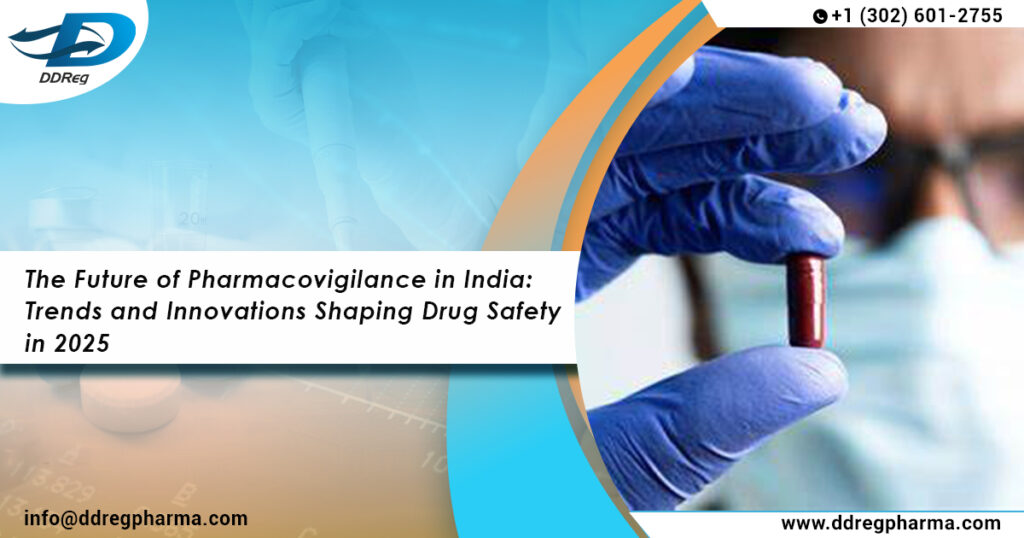
Pharmacovigilance, the science of detecting, assessing, and preventing adverse effects of drugs, is more critical than ever in a rapidly evolving healthcare landscape. With India’s emergence as a global pharmaceutical hub, the country’s pharmacovigilance services plays a pivotal role in ensuring drug safety for its billion-plus population and for international markets. In 2025, this field is set to witness transformative changes, driven by innovative technologies, regulatory reforms, and global collaborations.
The Growing Importance of Pharmacovigilance in India
India, known as the “pharmacy of the world,” is the largest supplier of generic medicines globally. This reputation underscores the need for a robust pharmacovigilance framework to uphold drug safety and maintain public trust. However, challenges such as underreporting of adverse drug reactions (ADRs) and fragmented healthcare data have long hindered progress.
In 2025, the focus is shifting to address these gaps with advancements like AI-driven drug monitoring, real-world evidence (RWE) integration, and strengthened pharmacovigilance networks.
Trends Shaping Pharmacovigilance in 2025
1. Artificial Intelligence and Machine Learning in Drug Monitoring
AI and ML are revolutionizing pharmacovigilance by automating ADR detection and pattern analysis. Predictive analytics help identify high-risk drugs and patient populations, enhancing proactive interventions. These technologies also streamline data processing, making pharmacovigilance more efficient and accurate.
2. Real-World Evidence (RWE) and Big Data Integration
RWE, drawn from electronic health records, insurance claims, and patient registries, is becoming a cornerstone of pharmacovigilance. By 2025, India’s health ecosystem will harness big data analytics to identify ADRs, evaluate drug efficacy, and predict long-term outcomes.
3. Blockchain for Transparent Drug Safety Reporting
Blockchain technology ensures secure and transparent recording of ADR data. In 2025, Indian pharmacovigilance systems are expected to adopt blockchain to improve data integrity, prevent tampering, and foster trust among stakeholders.
4. Enhanced Patient Engagement Through Mobile Health Apps
Mobile health applications empower patients to report ADRs directly, bridging gaps in underreporting. By 2025, more user-friendly apps with multilingual support will enhance participation across diverse demographics in India.
5. Global Collaborations and Regulatory Harmonization
India is aligning its pharmacovigilance framework with global standards, such as those set by the International Council for Harmonisation (ICH). In 2025, stronger partnerships with global regulators and pharmaceutical companies will elevate India’s role in international drug safety initiatives.
Innovations in Pharmacovigilance: What’s on the Horizon?
Risk Prediction Models
Innovative risk prediction tools leverage AI to forecast potential ADRs during clinical trials. This early detection mechanism reduces risks before drugs reach the market.
Pharmacogenomics Integration
Personalized medicine is gaining traction, with pharmacogenomics offering insights into genetic factors influencing drug response. In 2025, Indian pharmacovigilance will likely incorporate genetic data to predict ADRs more effectively.
Smart Surveillance Systems
Smart systems equipped with IoT devices are being developed to monitor drug adherence and detect side effects in real time, revolutionizing patient care.
Comprehensive Training and Capacity Building
The future of pharmacovigilance in India will also focus on developing skilled professionals adept at handling advanced technologies and adhering to global best practices.
Challenges Ahead and How India is Overcoming Them
Despite advancements, challenges like data privacy concerns, lack of public awareness, and resistance to new technologies persist. India’s healthcare system is addressing these issues through initiatives such as:
- Public Awareness Campaigns: Educating citizens about the importance of ADR reporting.
- Regulatory Reforms: Strengthening guidelines for pharmacovigilance reporting and compliance.
- Investment in Infrastructure: Expanding the Pharmacovigilance Program of India (PvPI) and building robust IT systems.
Conclusion
By 2025, India’s pharmacovigilance system is poised for unprecedented growth, driven by technological innovations and global collaborations. The integration of AI, blockchain, RWE, and patient-centric tools will not only enhance drug safety but also cement India’s leadership in global pharmacovigilance.


0 Comments